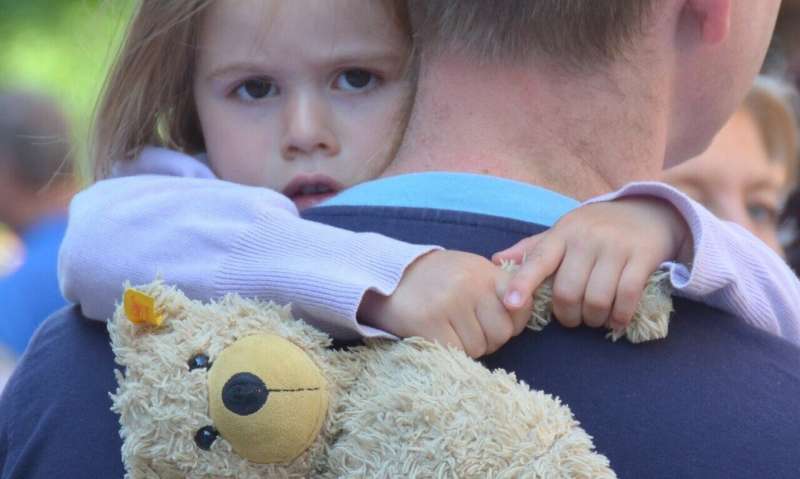Maintaining strong community ties boosts survival rates after a crisis

Strong community ties and government support for homeowners living in vulnerable areas boost survival rates and aid in recovery in the wake of hurricanes and other large-scale disasters, says Northeastern professor Daniel Aldrich.
Aldrich, whose latest research examines the connection between social ties and the ways people respond to hurricane evacuations, says friends, neighbors, and family can make the difference between life and death during an emergency evacuation.
"Unfortunately, a lot of the fatalities that happen are what we call preventable deaths: people drowning in their own homes, people getting trapped in cars," he says. "Those are preventable in the sense that if people have neighbors nearby, or friends or caregivers that can help them to get out of harm's way, [they are more likely to make it out alive]. We know from a lot of research that those people who have stronger connections, stronger ties are more likely to survive the shock of this size."
Albeit slow-moving, Hurricane Dorian has caused widespread devastation in the Bahamas, where it has already claimed the lives of seven people. Beyond the loss of life, the hurricane is predicted to cost billions in property damage. As Hurricane Dorian's outer band continued to lash Florida's central coast Wednesday morning, large swaths of people in parts of Florida, Georgia, North Carolina, and South Carolina were forced to evacuate.
As it tends to be the case during a crisis, some people will not have the means or ability to seek alternative shelter, says Aldrich, a professor of political science, public policy, and urban affairs who co-directs the Master's in Security and Resilience Studies program at Northeastern. This group, he says, includes poor people who commonly live in areas that are vulnerable to natural disasters, such as in trailer parks or low-lying motels near the coast. People in wealthier communities tend to live in residential neighborhoods, or on higher ground, and are therefore better protected against powerful storms, he says.
"Poorer communities tend not to have as much mobility as wealthier communities do—that is to say, they don't have a car," Aldrich says. "It was clear in the case of New Orleans; many of the thousands of people who died didn't have their own car, and the government was slow to try to evacuate them using publicly funded buses."
The government should allocate more resources to those communities so that those individuals "are the ones getting attention from social workers, from the police, from local government officials, those who want to be checked on more regularly that our neighbors should know about," he says.
There are a number of long-term solutions that could increase survival rates and help communities bounce back after a hurricane, says Aldrich. These include pulling back on development near the coast and elevating homes as was done in New Orleans after Katrina wreaked havoc in the city. The government can also buy back properties in areas that are prone to flooding and relocate its residents, he says.
"Moving people back away from areas that are definitely more vulnerable would be one easy way as a society—hard for those communities, but easy for society—to reduce our grief and reduce our costs."
Aldrich is no stranger to disasters. He and his wife and two small children moved to New Orleans in July of 2005, a mere six weeks before Hurricane Katrina struck the city. After resisting evacuation orders initially, they heeded the advice of a neighbor and packed all their belongings into a car and left.
"We drove from our home, which was destroyed, with a very small amount of stuff, maybe a small duffle bag of toys for our kids, to Houston, and ended up learning, about a day and a half later, that our house was gone, our neighborhood was gone, and my job at Tulane University was off for the semester," Aldrich says.
It was this series of unfortunate events that pushed Aldrich to think about the importance of resilience in the face of a crisis. What did it mean to be resilient as a family, a city, a community? Where would that strength come from? Aldrich and his family soon learned that they couldn't depend on private insurance or the government for help. The Federal Emergency Management Agency initially declined their request for assistance.
"In our own personal story, it was really these networks that were so powerful and so helpful to us," he says. "And that, for me, became in 2005 this real strong desire to travel around the world and understand: Is this a regular story? Do other communities also benefit or gain from having these stronger connections to people?"
From studying how communities and institutions around the world have made it through earthquakes, tsunamis, and hurricanes, he found that enhancing and broadening social connections long before disaster hits—whether it's via a block party or volunteer work—can go a long way toward improving survival rates.
"There are all kinds of things we can do as a society to emphasize the need to build social cohesion, and the side benefits from that social cohesion come when these shocks arise," he says.
Provided by Northeastern University




















